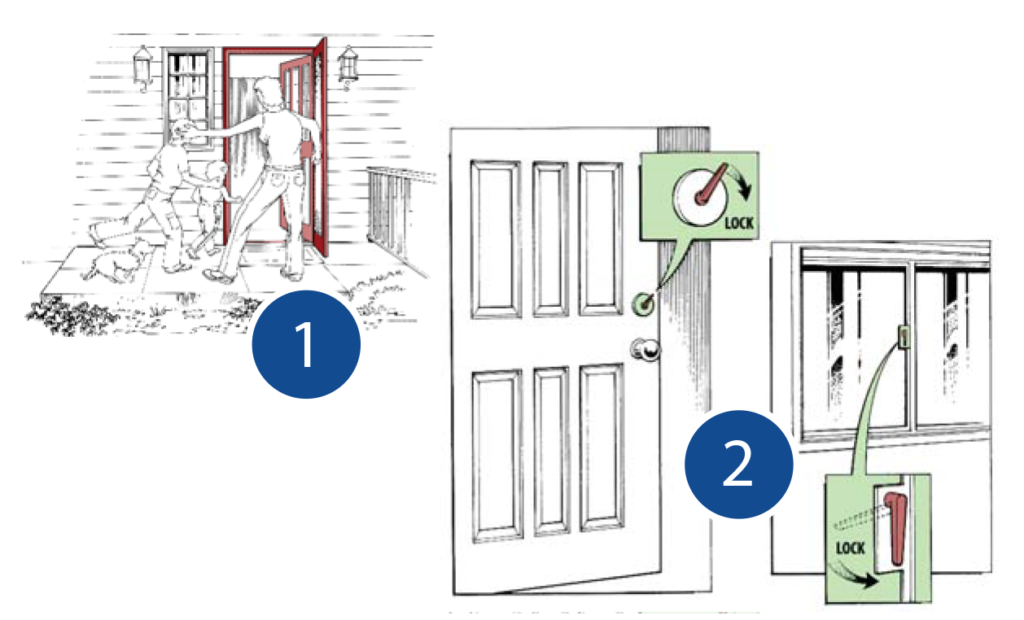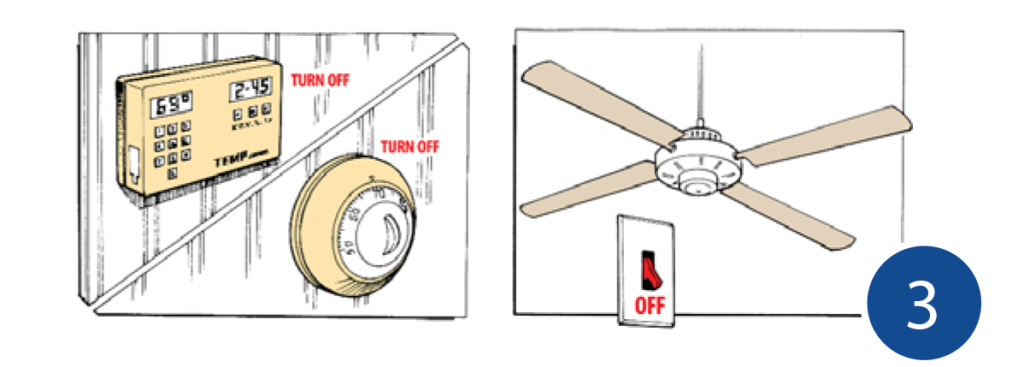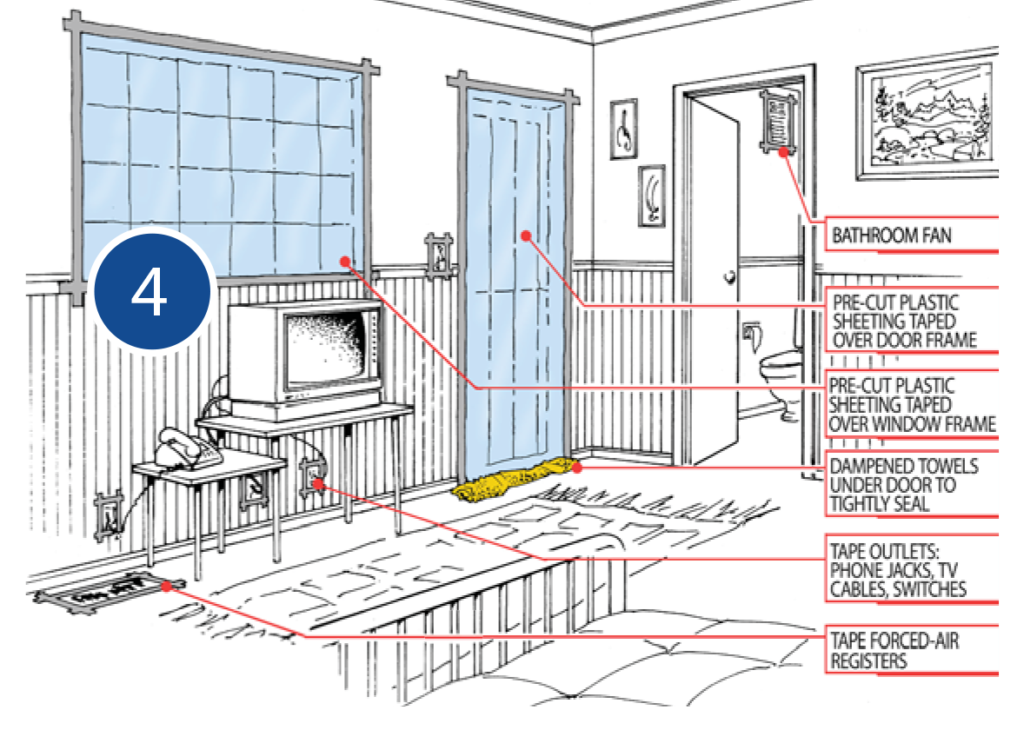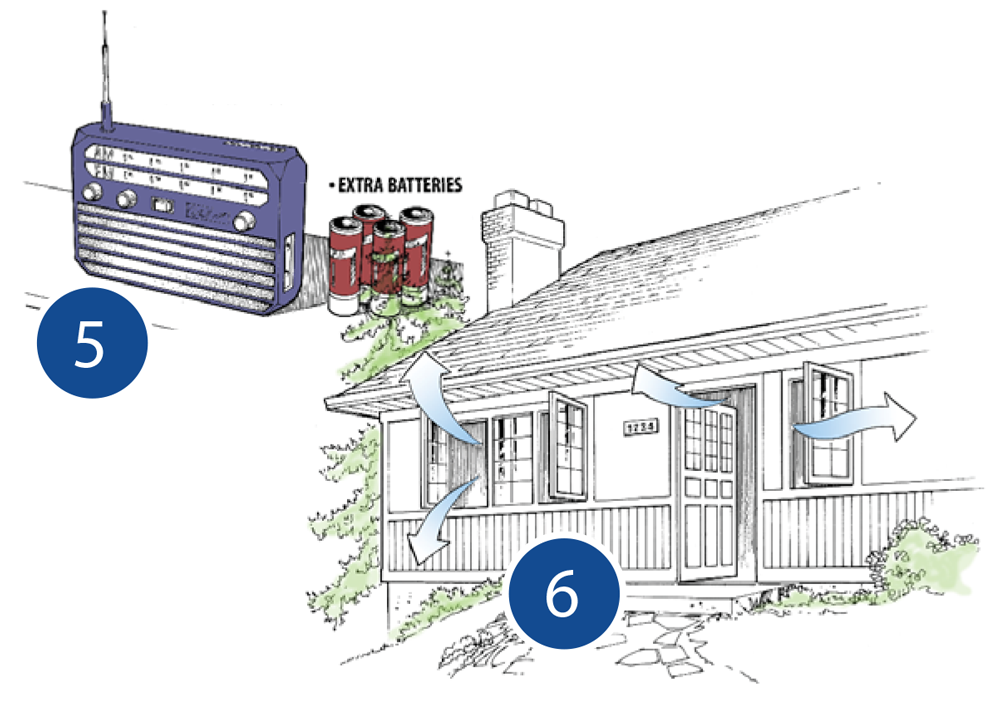Shelter in Place is a protective instruction that officials may issue when an area is threatened by a chemical release. This may involve an accident at Blue Grass Army Depot’s chemical weapons stockpile. It could also involve an industrial or transportation accident.
Download a copy of Shelter-In-Place Instructions.
SHELTER-IN-PLACE INSTRUCTIONS
When you shelter in place, you minimize the ways that outside air can carry chemicals into a building. Steps to take include:
1. Go Inside Immediately.
- Remember your pets.
2. Tightly lock all doors and windows.
- The quicker you do this and the tighter the window seal, the less likely that contaminants will get inside the building.
- Tape a status sign on an inside window to tell responders that you’re inside or have left.

3. Shut off fans, furnaces, air conditioners and other devices that circulate air throughtout your home.
- Adjust thermostats so that systems stay off.
- Tightly close fireplace and wood stove dampers.
- If a fire is lit, put it out, close the vents and doors.

4. Go into your pre-selected shelter-in-place room, and seal it tightly.
- Tape plastic sheeting over windows, doors, vents, bathroom fans, electrical outlets, phone and cable TV jacks. Pre-cut pieces of plastic sheeting make this task go more quickly.
- Place dampened towels under door cracks to form a tight seal.

5. Listen to the radio or TV for instructions.
- Officials will be giving instructions about possible relocation and updates on when it is safe to come outdoors.
6. Thoroughly air out your home or building once authorities announce that the emergency is over.
- Open all your doors and windows. This will allow small amounts of vapor that may have gotten in to leave.

ADDITIONAL INFORMATION
- Shelter where you are, unless otherwise directed by emergency officials.
- Do not attempt to get children at schools or day care. It’s likely they will be sheltered-in-place where they are.
- Shelter-in-place events typically don’t last long. The hazardous vapors are moved about by air and wind, which is constantly moving.
- In extreme cases, breathing through a wet cloth provides some additional protection.
Sheltering IN A CAR
- Tightly roll up all windows.
- Turn on the radio and listen to instructions.
- Shut off the engine to avoid drawing outside air into the passenger area.
- Turn off all heating and cooling systems.
- Close all vents.
- Breathe through a dampened cloth.
CREATING A “SAFE ROOM” IN YOUR HOME
WHY
Your house provides a good first layer barrier against chemical airborne agents. Additional protection is achieved by tightly sealing one room of your home that you have pre-designated and prepared.
WHAT
A safe room is one that easily and quickly can be sealed to protect you from airborne agents. It has some supplies to get you through the few hours you may need to stay inside the room. All doors and windows of that room will be sealed with plastic sheeting and tape. Damp towels will seal cracks under doors.
It’s likely you’ll have to stay in the room for a few hours, not days. Choose a room on an upper level, if possible. A master bedroom with an attached bathroom is an ideal safe room.
PREPARING A SAFE ROOM
- Choose one room of your home that you can seal tightly.
- Purchase plastic sheeting, scissors and duct tape.
- Pre-cut the plastic to fit all windows, vents and doors of the safe room, and label each piece.
- Purchase a box or bin to hold the plastic and tape and these additional supplies: a battery-operated AM/FM radio, extra batteries, snacks and water.
- Store these supplies in your safe room.
Shelter in Place at Home
This YouTube video, “Shelter-In-Place For Single Family Homes And Apartments” was produced by FEMA and shows residents of single family homes, condos and apartments how to shelter-in-place. Many local emergency management agencies have shelter-in-place kits for citizens in at-risk areas.
Shelter in Place in the Workplace
This YouTube video “CSEPP_BusinessSIP“ was produced by FEMA and shows businesses how to prepare for shelter in place orders in case of an emergency involving hazardous chemicals
FEMA’s Shelter-In-Place Pictograms
View FEMA’s Shelter-In-Place Pictograms to see Protective Actions for sheltering-in-place based on building type.